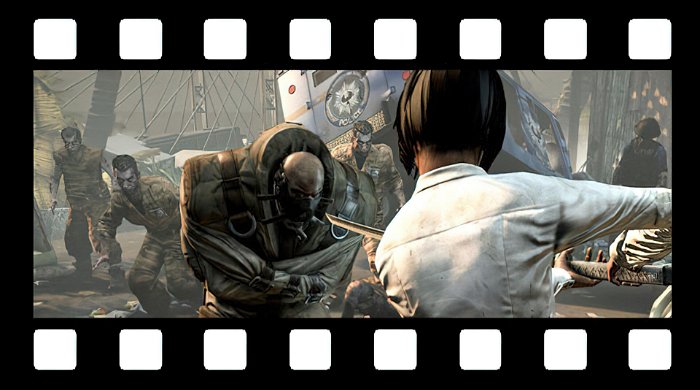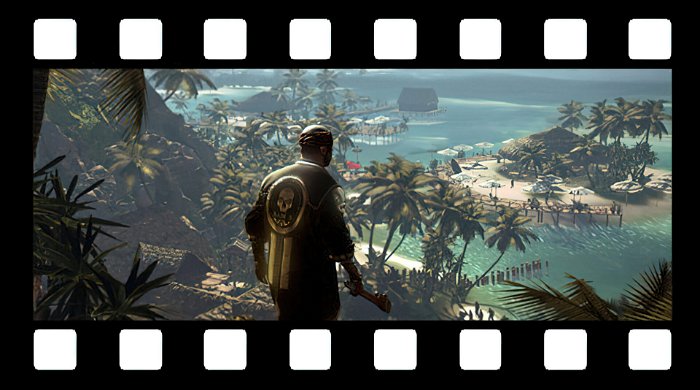A trailer promises a glimpse into the world of a game in development. It sets expectations, entices potential players, and, in the case of Dead Island, elicits strong emotional reactions. The trailer features powerful imagery, such as a girl falling from a hotel window, broken glass resembling tears, and a melancholic soundtrack. With its intense emotional content and controversial imagery, the Dead Island trailer raises questions about the role of storytelling and emotions in video game marketing.
While trailers are meant to sell a product, they can also be works of art. The artistry in the Dead Island trailer and others like the Gears of War trilogy and Neil Blomkamp‘s Halo series demonstrates that trailers can be both emotionally engaging and visually stunning. Gamers can choose to passively enjoy these trailers or actively analyze them, diving deeper into the messages they convey.
The Dead Island trailer has been met with skepticism due to its emotional intensity and disturbing imagery, such as the death of a young girl. Some viewers argue that the trailer crosses a line, while others believe that video games should not be limited in what they can depict. The trailer employs a technique called Pathos, which is the appeal to emotion in a work of art or literature. This emotional content invites the viewer to empathize with the characters, pondering how they would react in a similar situation and forming a connection with the game.

While the Dead Island trailer is visually stunning and emotionally gripping, many gamers question whether the game can live up to the promises made in the trailer. This skepticism is healthy, encouraging gamers to remain objective and critical of the content they consume. However, it is essential to recognize the artistic value of the trailer, even if it is ultimately meant to sell a product.
Creating an effective video game trailer requires a delicate balance between emotion and reason, capturing the viewer’s attention while also providing a realistic representation of the game. When a trailer fails to deliver on its promises, gamers can feel betrayed, resulting in backlash against the game. However, the Dead Island trailer has succeeded in sparking interest and emotional engagement, making it a compelling example of the power of video game trailers.
The Dead Island trailer has had a lasting impact on the gaming community. Its emotionally charged content and controversial imagery have prompted discussions about the limits of storytelling in video games and the role of trailers in shaping gamers’ expectations. As video games continue to evolve as an art form, it is crucial for gamers to critically analyze the content they are shown, developing skills to deconstruct and understand the messages conveyed in trailers.
The question remains: was the Dead Island trailer purely a marketing ploy, or was it a genuine expression of artistic vision? The trailer’s viral success and its ability to evoke strong emotions suggest that it is more than just a promotional tool. Whether or not the game lives up to the expectations set by the trailer, the Dead Island trailer has undoubtedly left a lasting impression on the gaming community.

What else do we see in the trailer? We see the family before and after the zombie apocalypse. We see them enjoying life and now having to struggle together in the wake of this disaster. We see them die one by one. The family orientation brings the viewer into focus.
We think: what if my family was in this position? Would I go out the door to attack a zombie horde to save my daughter? This is pathos. Before we continue on, I suggest you take a look at the trailer and a few of its accompanying remixes. Now back to the idea of pathos. We have to keep in mind that the Dead Island trailer, if we stick to our premise, is making a promise to the viewer. It’s saying that the heart-wrenching nature of the trailer will translate into the game. Will they be able to live up to this?
So many gamers ask: why would Deep Silver subject viewers to this kind of emotion? Why do they want to make us sad? Why am I feeling this way? What illustrated this point for me were the videos that have been sped up, reversed and changed chronologically. Gamers want to understand the trailer and the emotion within it. There’s this skepticism that surrounds the trailer’s imagery.
The image of the little girl dying is so powerful that some viewers resent being exposed to it. The video game trailer is a promise, but viewers of a more passive nature may be exposed only to the surface and will misinterpret what it is trying to achieve. A trailer has to appeal to all sides of a gamer. Since we’ve already taken a bit of an Aristotelian turn here, let’s look at the trailer’s Logos.
“The Dead Island trailer made its debut in February, and to this day, it is still an emotion-packed trailer.”
Logos is the appeal to the reason or logic of the viewer. Let’s take a look back at a really good trailer. The Bioshock Infinite debut trailer is a short minute-and-a-half scene. The trailer focuses on the viewer’s logos. It displays the environment you will be exploring, some slight hints at gameplay mechanics and a little story. With trailers like these the subsequent gameplay trailers for Bioshock Infinite, you see that trailer directors strive for a cinematic quality. They want to present the trailer in a way that says, “You could do this in the actual game.” Key visual details, things that will make you think and imagine, these are the qualities of a good, reason-driven trailer.

Why would a director choose to appeal to logos or pathos? Why not both? Personally, the Dead Island trailer, as a stand-alone film, is beautiful. It’s heart-wrenching, dramatic and visually stunning; however, there’s a pervasive opinion that the trailer promise must be achieved. This mindset, a skeptical one, is different than a critical one. A gamer can still be excited about a video game though they may be critical of what they are shown. This keeps us objective about our experience, not wanting to be drawn in by stunning visuals or hype. We have to deconstruct our experience and understand why the trailer works.
The one area of skepticism that surrounds the trailer is this: it’s meant to sell you a product. The Dead Island trailer is not art for art’s sake. It is a highly emotional trailer that affects both the pathos and the logos of the viewer. However, it is still a selling point.
The art of the trailer is a complex one. The most important trait a trailer requires is tact. They make a promise to the viewer. This is how the game will be, it says. If a video game doesn’t live up to that promise, gamers will revolt against it. The Dead Island trailer made its debut in February, and to this day, it is still an emotion-packed trailer.
It appeals to both the logos and the pathos of the viewer, and it effectively made me want to buy the game. All aspects of video game culture have to be examined. As video games grow as an art form, we have to be critical of what we are shown, and we need to develop the skills to deconstruct what we see. Was the Dead Island trailer a marketing ploy? Was it an artistic short film? Was it intentionally viral? It made me shed a few tears and that’s enough to make me want the game.



